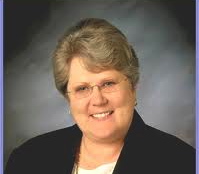The superintendents of two of Idaho’s largest school districts said five years is too long to wait for the state to erase recession-era spending cuts.

Meridian Joint School District No. 2 Superintendent Linda Clark and Idaho Falls School District Superintendent George Boland said Tom Luna’s 6 percent proposed budget increase is a start, but does not go far enough for them.
Luna, the state superintendent of public instruction, build his $1.4 billion budget around Gov. Butch Otter’s Task Force for Improving Education’s recommendations. Most of the new money would go to teacher salaries, with the next-largest chunk going to operational funding.
Luna’s proposed 2014-15 budget calls for spending $16.5 next year to begin restoring $82.5 million in cuts to operational funding – a pool of money sometimes called “discretionary spending.” Luna recommends continuing to restore that money over the next four years until the cuts are erased.
But Clark said the cuts in state funding were made over three years, and she would like that funding returned just as quickly.
Per classroom spending in Idaho
2014-2015 proposal: $21,140
2013-14: $20,000
2012-13: $19,706
2011-12: $19,626
2010-11: $21,795
2009-10: $25,459
2008-09: $25,696
2007-08: $25,442
2006-07: $25,436
2005-06: $24,695
2004-05: $24,450
2003-04: $24,447
“It’s bleak,” Clark said. “I’ve been hearing from other superintendents about how they would like to see that restored more rapidly.”
While administrators are asking for even more, lawmakers have said the 5.9 percent funding increase may already be “a stretch.”
The state’s level of operational funding peaked at $25,696 per classroom during the 2008-2009 school year. Lawmakers cut that funding over the next three years, to the point where per classroom spending dropped to $19,626 for the 2011-12 year.
Districts can basically spend operational funding on any education-related purpose.
Operational funding is calculated using district’s average daily attendance figures and then applying a divisor to arrive at the classroom spending level.
Typically, the largest expense districts use operational funding for is employees’ benefit costs, Hill said. The money the state pays in salaries and benefits covers obligations for Social Security and Medicare, but doesn’t cover health insurance, vacation, dental or life insurance.
Districts dip into operational funding to cover those costs. The next biggest cost for districts is often utilities, then transportation and fuel.
Districts also may use discretionary funding if they pay teachers at levels above the state salary schedule.

Boland said cuts made it difficult for districts to cover rising costs.
“It’s not keeping pace with increased health insurance rates and overall inflation,” Boland said. “It may all be consumed before you can add it back fast enough.”
Boland said he would like to see more of the funding returned sooner or for state budget writers to create a budget line item tying operational funding to inflation and increases in insurance.
“It’s nice to see an increase in (operational funding), but I don’t think it’s sufficient,” Boland said.
In Meridian, Clark and Joint School District No. 2 officials responded to the funding cuts by reducing spending in the district by $40 million. They cut content funding for textbooks, removed 14 days from the calendar before eventually restoring nine of those days and eliminated mid-day bus services for kindergarten.
Additionally, the district cut staff to the point it has 117 fewer positions than the state allocation for teachers and 19 fewer administrative positions.
“We cut $40 million,” Clark said. “Just to put it in perspective, if Superintendent Luna’s budget goes forward we would have about $10 million of that restored.”
Clark, who served on the task force, led the call to restore operational funding. The task force also used an example of returning funding over five years – like Luna did in his new budget proposal. But Clark said that was only meant as an example – not a recommendation – because the task force did not assign priorities and members knew that many of their 20 recommendations included significant costs.
“The needs out there are very real in the districts as they burn through resources,” Clark said. “We’d like to see it go faster.”
In depth budget coverage
Oct. 1 Luna calls for 5.9 percent budget increase
Oct. 1 Luna budget holds line on technology
Oct. 1 Career ladder would raise new teacher pay
Oct. 1 Luna wants to create six advisory committees
Oct. 3 Lawmakers start scrutinizing Luna budget
